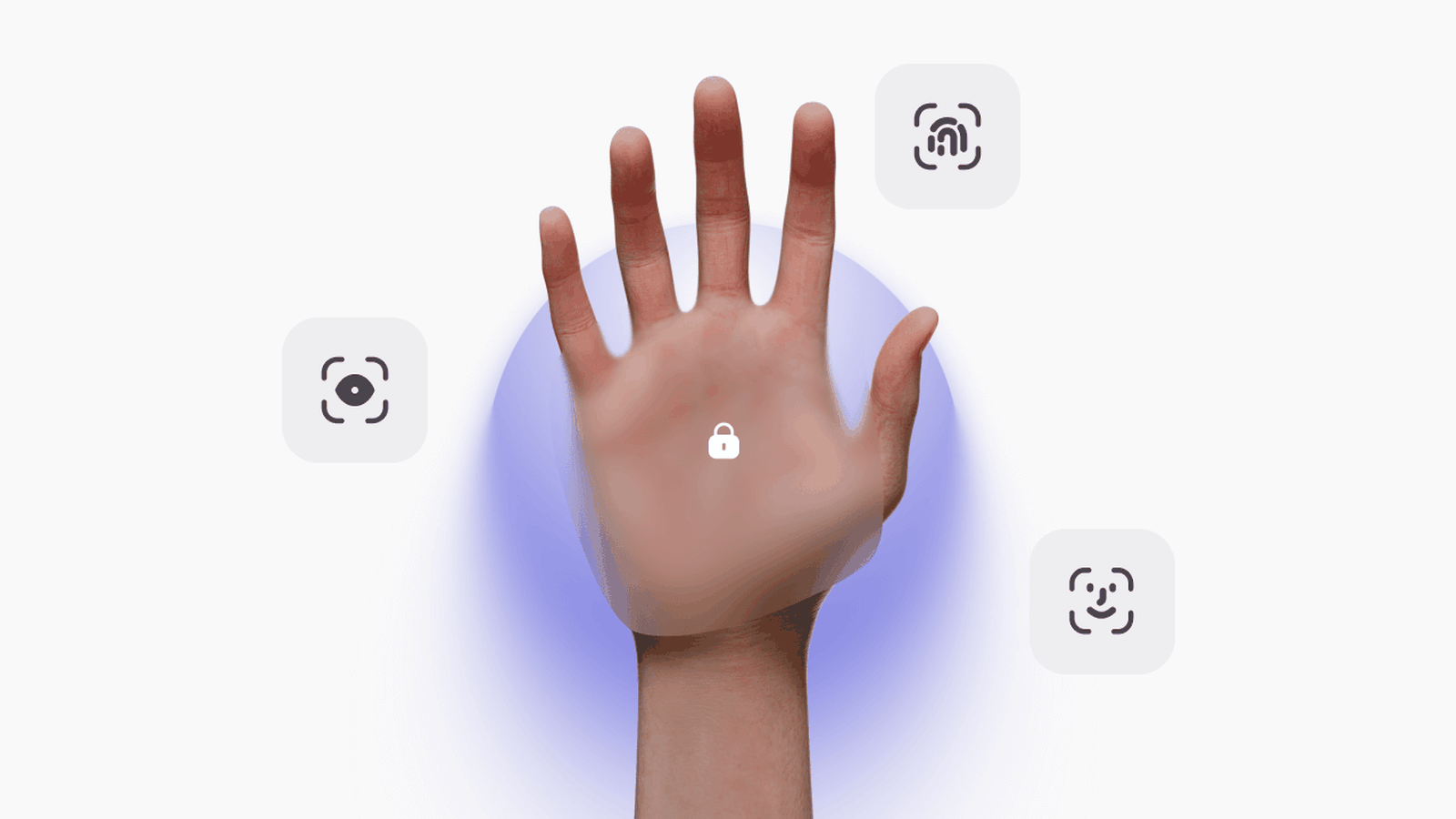At Keyo, we are building a global biometric ID platform that prioritizes privacy, all powered by palm biometrics. This approach is exceptionally accurate, leveraging millions of data points—both internal and external—to verify identity. Unlike other methods, such as facial recognition and fingerprint, palm patterns are unique to each individual, even identical twins, and cannot be replicated, thanks to internal features like palm vein patterns.
So, why did we choose the palm as the foundation of our biometric ID platform? Let’s dive in!
What is Palm Scanning?
Our hands have unique patterns on the outside, like palms and fingerprints, and on the inside, like vein patterns. This makes them significantly more accurate and reliable identifiers than other methods, such as facial or fingerprint recognition.
Palm scanning technology combines two key techniques for unmatched precision:
Palm print recognition Palm print scanning captures the intricate details of your palm's surface using advanced cameras. This process focuses on three critical layers to establish a unique biometric signature:
Primary Lines: The prominent lines are often associated with palm reading.
Secondary Lines: Subtle lines visible to the naked eye.
Epidermal Ridges: Delicate, finger-print-like lines covering your entire palm.
Palm vein recognition examines the hidden vein patterns beneath the skin using advanced infrared scanning.
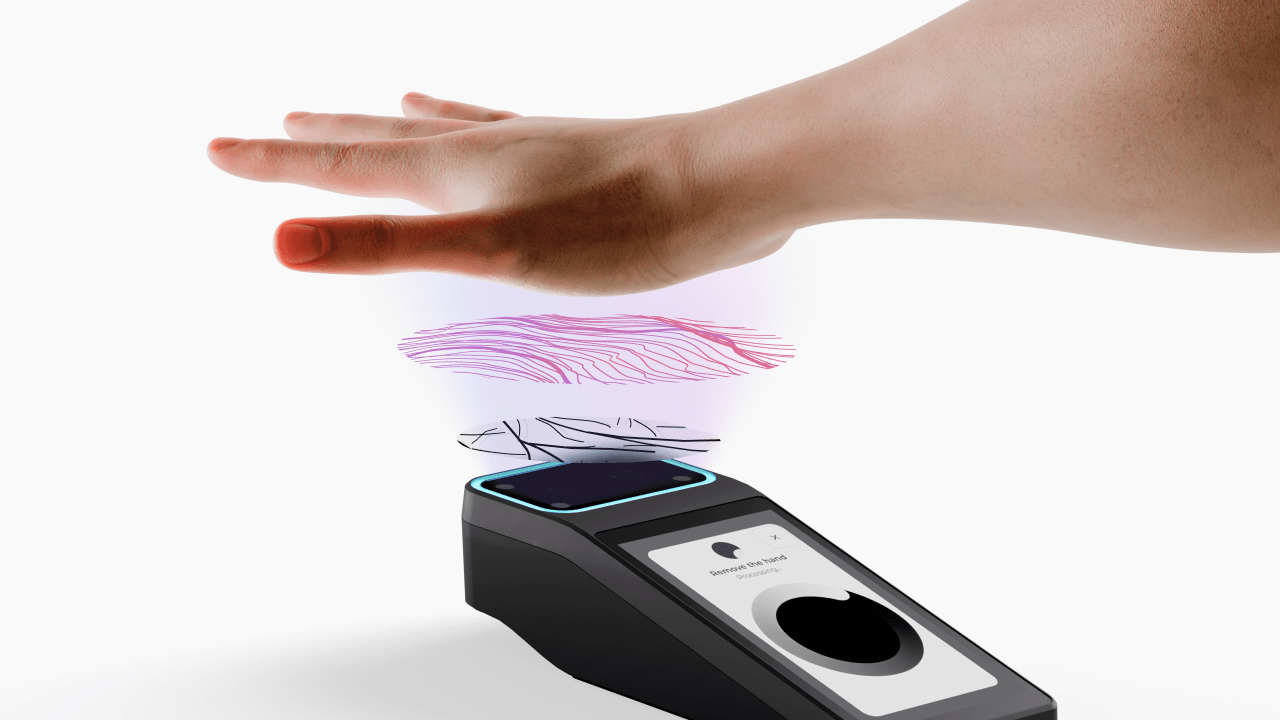
Why Keyo Does Both
Keyo's unique and custom-built palm scanners harness the power of both palm print and palm vein technologies. Here's why:
Double Authentication: Keyo’s dual-layer authentication merges external and internal biometrics, analyzing millions of data points from the surface and beneath your skin. This approach prevents unauthorized access, providing unprecedented peace of mind and security assurance.
Scalable Solution: The combination of palm print and palm vein scanning is great not only for the privacy and security of our biometrics but also enables Keyo to scale effortlessly in large populations. From securing high-traffic buildings to facilitating seamless transactions, Keyo’s system adapts to the growing demands of modern business environments without compromising safety or efficiency.
Fingerprint vs. Palm Identification
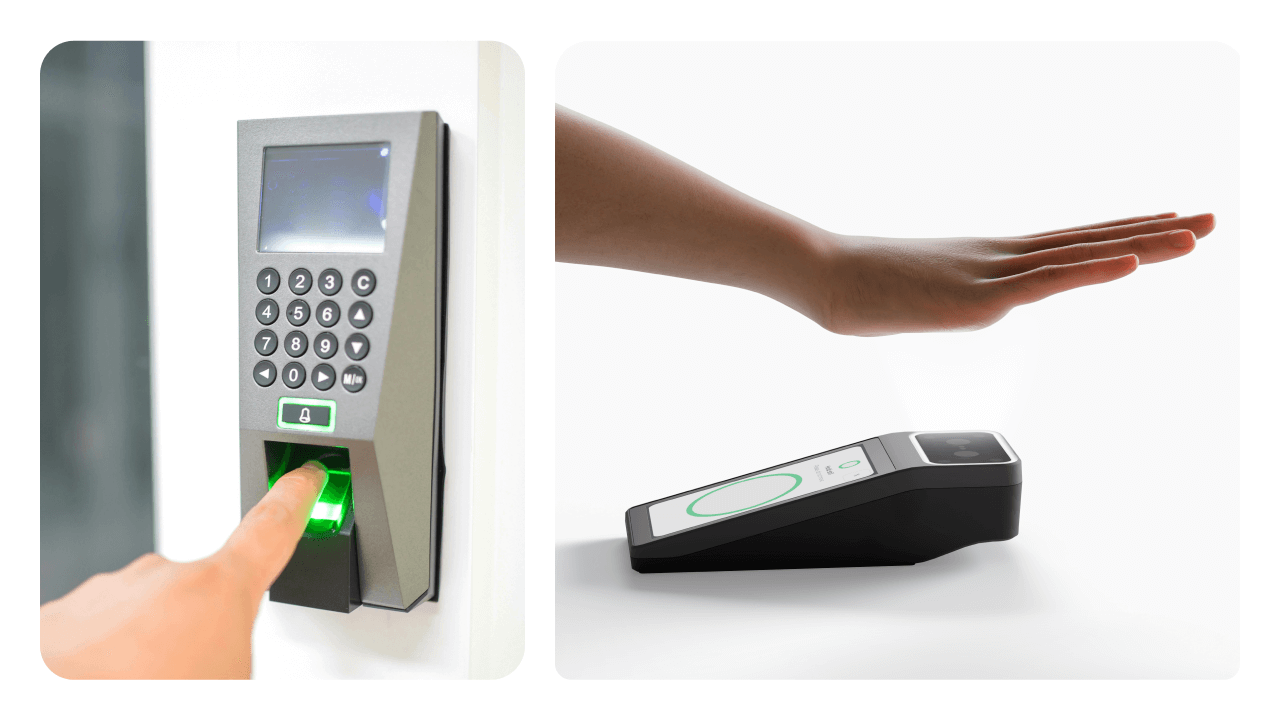
Fingerprint recognition has long been the go-to biometric method for everyday applications. Its simplicity and ubiquity are undeniable, but when compared to palm identification, some of its limitations become clear.
Criteria | Fingerprint Recognition | Palm Recognition |
|---|---|---|
Accuracy | Higher false rejection rates | 10x more unique features |
Security | Vulnerable to replication/spoofing | Vein patterns are uncopyable |
Scalability | Requires maintenance, less suited for large-scale systems | Excels in high-traffic environments, contactless |
Hygiene | Requires physical contact with sensors. | Fully contactless, reducing contamination risk. |
Accuracy
Fingerprint scanners analyze patterns of arches, loops, and whorls to identify fingerprints. While effective, fingerprints have fewer distinguishing features due to their smaller surface area, leaving more room for error. Palm scanning, by contrast, provides 10 times more unique features per hand. The limited surface for fingerprint recognition means more attempts may be required for authentication.
Additionally, fingerprint scanners are known to have higher false rejection rates due to the limited surface areas. The combination of palm vein and print technologies reduces false acceptance rates (FAR) and false rejection rates (FRR), making palm recognition one of the most precise biometric modalities available today.
Security
While fingerprints are unique, they can be easily left on surfaces and replicated, which poses a risk of identity theft and security breaches. In fact, high-resolution silicone fingerprint replicas have been known to trick many sensors, making them vulnerable to spoofing.
Palm scanning, however, leverages vein patterns located beneath the skin—only detectable using specialized scanners. This unique feature makes copying or tampering with palm biometric data nearly impossible, offering an extra layer of security.
Scalability
Fingerprint scanners are commonly used in personal devices or standalone systems, but they are less practical in large-scale, high-traffic environments due to scalability challenges. These sensors also demand regular cleaning and calibration, which, despite their lower upfront cost compared to palm scanners, leads to higher maintenance and replacement expenses—making them less suitable for heavy-use settings.
In contrast, palm scanning offers a contactless solution, making it particularly well-suited for shared spaces and industries such as healthcare, finance, and public transit. Its hygienic design is especially appealing in our post-pandemic world, where cleanliness and safety are paramount.
Facial Recognition vs. Palm Identification
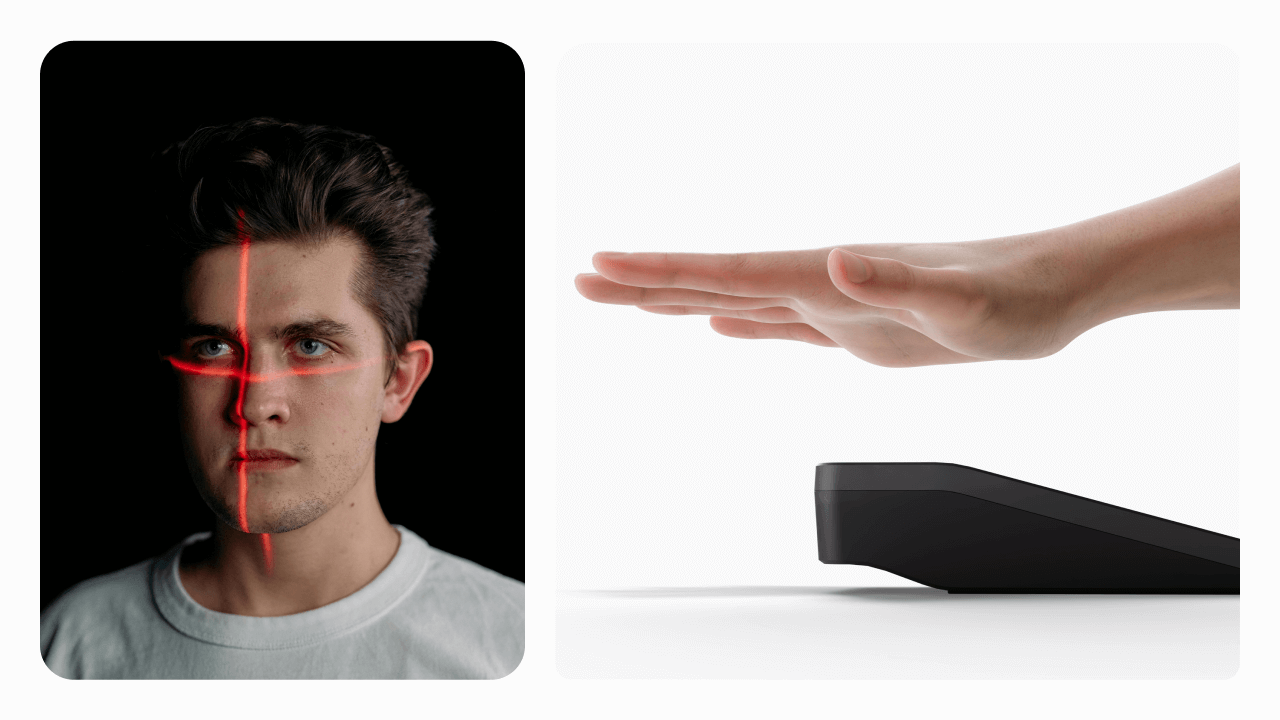
Facial recognition has gained significant attention, but as its adoption grows, its limitations become increasingly apparent.
Criteria | Facial Recognition | Palm Recognition |
|---|---|---|
Universal | Biases based on gender, ethnicity, and age. | Consistently accurate across all demographics. |
Safety | Faces are highly visible, making them vulnerable to unauthorized use. | Requires active consent, minimizing the risk of unauthorized access. |
Security | Faces are visible and easy to replicate. | Internal vein mapping ensures privacy and safety. |
Consistency | Affected by aging, masks, and expressions. | Palms remain stable over time. |
Scalability | Can support up to 10,000 users. | Supports up to 32.5 million users. |
Versatility | Require placement at head height for accurate use. | Compact and phone-sized, they integrate effortlessly into countertop settings. |
Universal
Facial recognition systems have been criticized for their inaccuracy across different demographic groups. Studies show that these systems perform best with specific groups (e.g., white males) but may fail to deliver reliable results for women and people of color. Palm scanning, in contrast, eliminates these biases. The unique features of a palm—veins and surface patterns—are equally precise regardless of gender, ethnicity, or age, making it a universally fair solution.
Safety
Our faces are always visible, making them easier to copy for unauthorized use. Palm ID, however, analyzes external and internal features, including veins, that are impossible to see or replicate without consent. Additionally, unlike face recognition, palm requires active participation and is, therefore, far more private.
Consistency
Unlike faces, which can change with expressions, aging, masks, or glasses, palms remain consistent over time. This stability ensures reliable and repeatable identification across generations of users—ideal for enterprise needs.
Scalability
Keyo's advanced technology enables seamless identification for up to 32.5 million users, far exceeding the capabilities of facial recognition systems, which typically handle only 5,000 to 10,000 users. This provides a highly scalable solution tailored to meet the needs of enterprises of any size.
Versatility
Installing face recognition devices can be a challenge. They typically need to be mounted 5-6 feet off the ground and require well-balanced lighting to prevent glare. In contrast, palm sensors offer a more compact and versatile solution, seamlessly integrating into countertop setups.
Keyo’s newest hardware combines functionality with a compact design, measuring just ~8 inches—about the size of a Galaxy Fold phone. Featuring NFC, cellular connectivity, and a built-in battery, it delivers unmatched flexibility for mobile applications.
Iris Recognition vs. Palm Identification
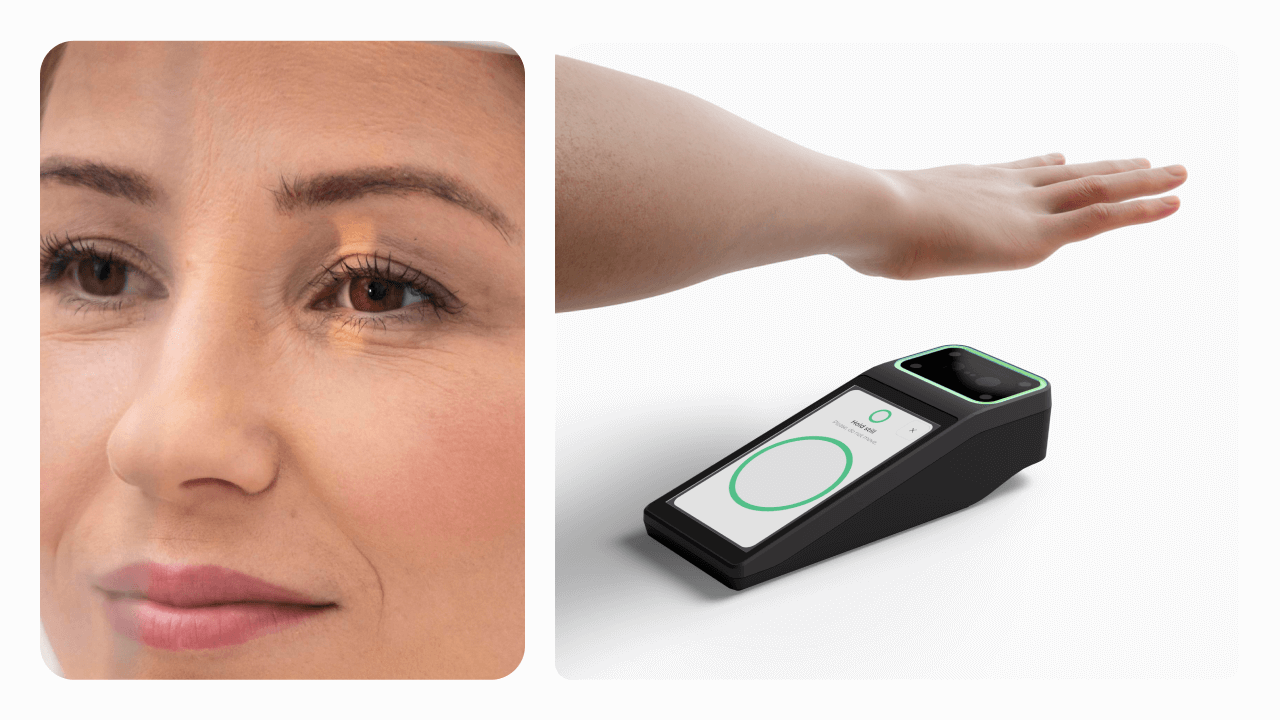
Iris recognition is another high-accuracy biometric solution, but its practical applications reveal key differences between it and palm scanning.
Criteria | Iris Recognition | Palm Recognition |
|---|---|---|
Reliability | Sensitive to lighting, contact lenses, or cataracts. | Works effortlessly in varied conditions. |
Safety | Concerns about infrared radiation exposure. | Completely safe and non-intrusive. |
Scalability | Functions in well-lit, controlled environments. | Excel in high-throughput scenarios |
Hygiene | Precise face alignment triggers hygiene concerns | Quick and contactless |
User Experience | Requires precise alignment and close proximity. | Intuitive and natural interaction. |
Security | Vulnerable to high-quality spoofing attacks | Internal vein mapping ensures privacy and safety. |
Environmental tolerance | Bad lighting, contact lenses, and eye infections reduce performance. | Performs consistently under varying lighting or environmental conditions |
Reliability
Both iris and palm scanning are highly accurate biometric technologies, but palm scanning is less invasive and more user-friendly. Unlike iris scanners, which require users to look into a device at a specific distance, palm scanners work intuitively without such constraints. While iris scanners map approximately 250 key points, palm scanning analyzes millions of internal and external data points to create a unique biometric signature. Additionally, factors like cataracts can distort the images required for iris or retina scans, compromising their effectiveness. Similarly, iris scanners are incompatible with patterned or colored contact lenses, further limiting their reliability in certain scenarios.
Safety
Palm scanning offers a clear advantage regarding user comfort and safety. Iris scanners require close proximity to the face, which can make users uneasy and raise privacy concerns. Minor concerns also exist about the potential effects of infrared radiation on the eye, such as possible heating of the aqueous humor or irritation to surrounding areas like the eyelids. In contrast, palm scanning is contactless, ensuring a safer and more comfortable experience for users while maintaining their privacy and peace of mind.
Scalability
Iris recognition systems can excel in controlled environments but struggle when deployed in high-throughput scenarios. Palm scanning’s simplicity and versatility make it a preferred choice for scalability in industries like public transit, stadium ticketing, and financial services.
Hygiene
With iris recognition, users must position their faces close to a scanner. This can trigger hygiene concerns, particularly in shared or public-use cases where users interact with devices successively.
Palm scanning avoids these concerns altogether by operating contactless, making it the preferred option given the growing sensitivity to hygiene in a post-pandemic world.
User Friendliness
Engagement with biometric systems significantly influences adoption rates. Iris scanning requires precise and often awkward facial alignment in front of the device, which many users find unnatural or even intimidating. Palm scanning offers a seamless experience without the need for complex setups—users simply wave their hands. Its natural, intuitive interaction ensures higher user satisfaction and engagement.
Security
Security is non-negotiable for business leaders implementing biometric systems. Iris Recognition is highly secure under optimal conditions. However, it is vulnerable to sophisticated spoofing attacks using high-quality iris images, and its effectiveness deteriorates if image quality is compromised. Palm Scanning, by analyzing comprehensive internal vein structures, is much harder to replicate, offering enhanced protection and resistance to spoofing attempts.
Environmental Tolerance
Iris recognition struggles in imperfect conditions; strong lighting, sunglasses, and reflections can produce recognition failures. Palm scanning performs consistently under varying lighting or environmental conditions, ensuring reliable performance indoors and outdoors.
Partner with Keyo
At Keyo, our mission is to create a global biometric identity network that prioritizes privacy, inclusivity, and security. The palm aligns perfectly with our vision. It combines the highest levels of accuracy, security, and user convenience with the scalability required for global applications.
By adopting palm scanning, we’re not just building a platform that works today—we’re future-proofing identity verification for the future.
Learn more at keyo.com or hello@keyo.co
